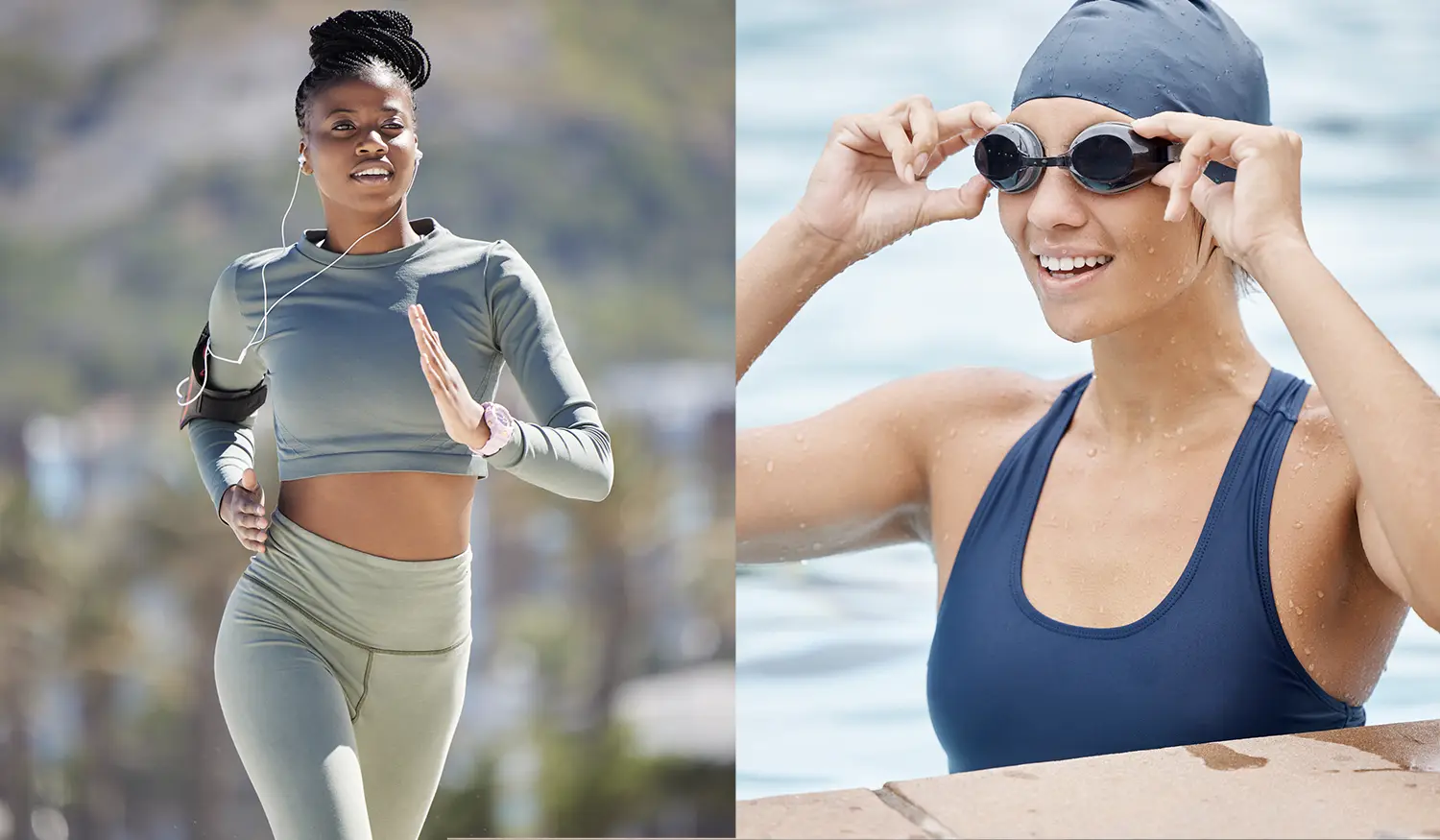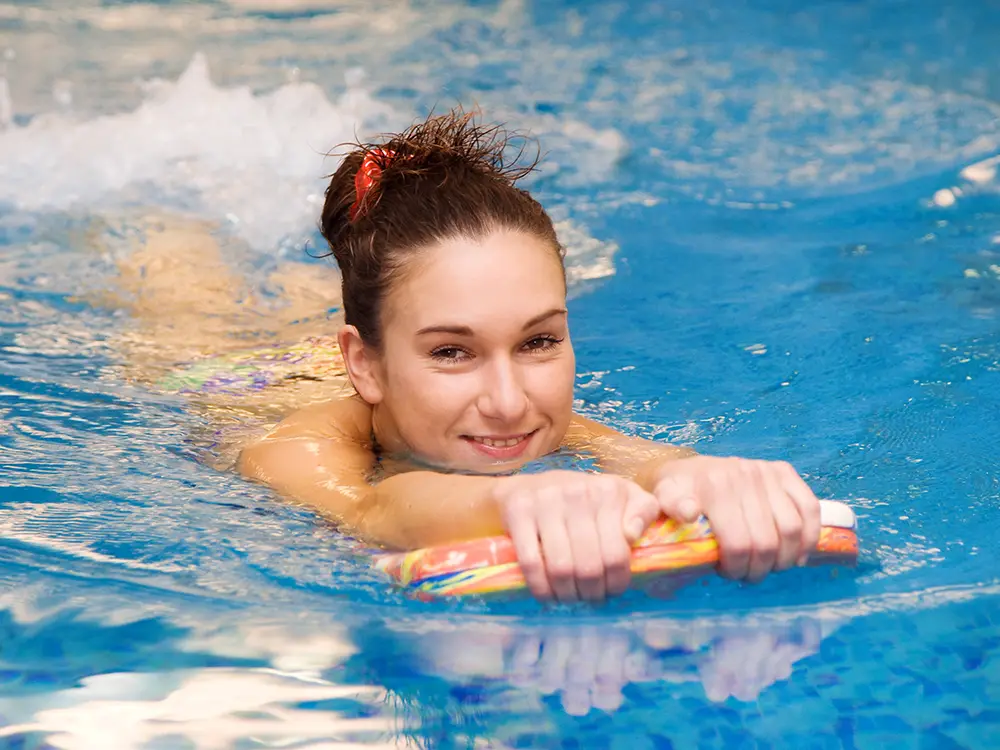
Dive into Fitness: Swimming Vs. Running – A Comparative Analysis

Running has its merits. It offers cardiovascular benefits, weight management and increased endurance. However, it’s a high-impact activity. Thus, the repetitive stress can lead to injuries. On the other hand, swimming, the gentle aquatic exercise, offers a true powerhouse of health benefits, encompassing cardio, strength, flexibility and therapeutic elements.
Plus, with a fiberglass swimming pool from Leisure Pools, you be assured you will always be swimming in comfort and style.
Why Swimming?
Swimming is a low-impact, full-body workout that simultaneously engages your arms, legs, core, and back. It’s great for those who need to avoid high-impact exercises due to joint problems, injuries, or certain health conditions. While running solely relies on your leg strength and stamina, swimming calls for a coordination of your entire body, resulting in a balanced, total-body workout.
The Centers for Disease Control and Prevention (CDC) indicates swimming is an ideal way to get an aerobic workout, potentially reducing the risk of chronic illnesses and diseases. So, let’s test the waters and see how swimming is a great way to incorporate physical activity into your day. Further, if you are a runner considering switching from the pavement to the water, these benefits just might help encourage that transition.

Cardiovascular Benefits
Swimming is just as effective as running when it comes to cardiovascular health. The American Heart Association states that just 30 minutes of swimming a day can help reduce coronary heart disease in women by up to 30-40%. Plus, swimming can significantly improve lung capacity and oxygen consumption better than running. This is largely due in part to the breath control required.
Strength and Flexibility
Swimming, unlike running, works out every major muscle group in your body. The resistance of water is about 44 times greater than that of air. This means your muscles have to work harder to move. This natural resistance training helps build muscle tone and strength without the need for additional weights or equipment.
Furthermore, the rhythmic, elongated movements involved in swimming naturally promote flexibility. This makes swimming an excellent exercise for maintaining and improving mobility as we age. Running, with its stiff, repetitive motion, may not offer this benefit.
Therapeutic Benefits
The buoyancy of water makes swimming a therapeutic exercise, offering relief from physical discomfort and stress. It can help manage chronic diseases, rehabilitate injuries and improve mental health by releasing endorphins. The soothing, rhythmic nature of swimming can act as a form of meditation. As such, it can potentially reduce anxiety and improve mood, which is a bonus that running does not typically provide.
Burning Calories
If weight management is your goal, swimming is an effective choice. According to Harvard Health, a general 30-minute swimming session burns about 223 calories for a 155-pound person, compared to 298 calories running at a 5-mph pace. While running burns slightly more calories, swimming’s overall benefits and lower injury risk can provide a more sustainable and long-term fitness solution.
Swimming in a Leisure Pools Fiberglass Pool
When it comes to swimming for fitness, the quality of your pool matters. Leisure Pools offers a vast range of stylish, high-quality fiberglass pools. The smooth surface of our pools minimizes the risk of scrapes and bruises. Thus, ensuring a safe, enjoyable swimming experience. Moreover, the non-porous nature of fiberglass makes our pools easier to maintain, saving you time and allowing you to focus on achieving your fitness goals.
For the Die-Hard Runner: Running in the Water is an Option
For those who love to run but appreciate the low-impact option of exercising in the pool, why not try running in the water? This can be a fun way to combine your passion for running with your desire to be in the water.
Running in a fiberglass pool provides a unique form of resistance training. It capitalizes on the water’s buoyancy to reduce joint stress while simultaneously challenging the muscles. The non-porous, smooth finish of fiberglass ensures a comfortable experience, free from the roughness that can be encountered in other pool materials.

Getting Your Feet Wet
While both swimming and running offer significant health benefits, the choice ultimately depends on your personal needs and goals. However, when considering the overall advantages, swimming, especially in a Leisure Pools fiberglass swimming pool, stands out for its low-impact, full-body workout capabilities, cardiovascular benefits and therapeutic qualities.
Embrace the numerous benefits swimming offers and transform your backyard into a fitness oasis with Leisure Pools. Contact your local Leisure Pools dealer and dive into fitness today.


